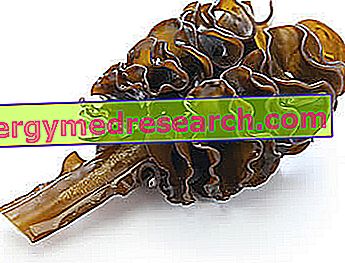Generality
Feta is a fresh cheese that has its historical roots in ancient Greece.
It is produced exclusively from sheep's milk, or alternatively from sheep's milk and goat's milk in a 7: 3 proportion.
Because of the preservation method, which involves immersion in brine curd for about 3 months, the feta has a characteristic white color and a sour taste. Once removed from the liquid, it takes on a much more compact consistency.
Outside the European Union, cheeses very similar to feta are produced which, although sometimes called by the same name, also contain (or only) cow's milk. Feta, however, is produced in large blocks and has a less friable and grainy texture than the alter egos made from cow's milk.
Since 2002, the term "feta" has become a European Union Protected Designation of Origin. According to the current legislation: "only cheeses produced in the traditional way and in particular areas of Greece, based on sheep's milk or a mixture of sheep and goat (up to 30%), can be called feta".
However, in the eastern Mediterranean and around the Black Sea, even very similar cheeses can be found today, therefore white and preserved in brine (often called "white cheese").

Nutritional Features
Feta is a cheese with medium digestibility, since its lipid portion is quite significant. On the other hand, it has an energy density among the lowest, thanks to the abundant quantity of water. In fact, despite being preserved in brine (which tends to dehydrate the curd), the feta is still subjected to a dehydration lower than the average of dairy products (also due to the absence of seasoning).
Feta Nutritional Values | |||||||||||||||||||||||||||||||||||||||||||||||||||||||||||||||||||||||||||||||||||||||||||||||||||||||||||||||||||||||||||||
 | |||||||||||||||||||||||||||||||||||||||||||||||||||||||||||||||||||||||||||||||||||||||||||||||||||||||||||||||||||||||||||||
| |||||||||||||||||||||||||||||||||||||||||||||||||||||||||||||||||||||||||||||||||||||||||||||||||||||||||||||||||||||||||||||
The nutritional characteristics of feta are varied. First of all it contains little lactose, even if in measurable quantities; this makes it suitable for feeding to mildly intolerant individuals, but is contraindicated in the severe intolerant's diet.
Feta provides a fair concentration of high biological value proteins. The breakdown of fatty acids (even if not mentioned in the table) is not the best, as it should favor saturated ones. Being obtained from whole milk, in addition to the percentage, the absolute quantity of the latter is also quite important; pure cholesterol concentration is not the best. Therefore, in case of hypercholesterolemia, feta is a food to be consumed in moderation.
As for vitamins, feta is rich in riboflavin (vitamin B2) and retinol (vitamin A). On the contrary, with regards to salts, calcium, phosphorus and sodium abound above all; the latter constitutes an unfavorable element, since its excess in the diet is considered a risk factor for the onset or aggravation of arterial hypertension.
The average portion of feta, if used as a dish, is about 100-150g (250kcal).
Gastronomic uses
Feta is mainly used as a table cheese or as an ingredient in salads (such as the Greek one) and desserts.
Noteworthy is also its use in the famous recipes spanakopita (spinach cake), tyropita (cheese cake) and in the appetizer with olives, extra virgin olive oil and aromatic herbs (especially oregano).
Feta is also served grilled, as a sandwich filling, in omelettes, or as an alternative to other cheeses in some recipes.
Black and White Rice Salad with Feta and Walnuts
X Problems with video playback? Reload from YouTube Go to Video Page Go to Video Recipes Section Watch the video on youtubeDescription
Feta is a fairly soft but compact Greek cheese, with or without small holes, without crust and uniform white color.
Usually, feta is produced in large blocks that remain immersed in brine and drained only before consumption.
The maximum humidity of the cheese is 56%, the minimum fat content in the dry substance is 43% and the pH varies from 4.4 to 4.6.
The flavor of the feta is spicy and savory, delicate or pungent depending on the case; in fact, feta is traditionally divided into "soft" and "firm" varieties.
The "firm" variety is more spicy, solid and considered qualitatively superior. The "soft" one is so soft that it can be spread; it is considered less valuable and has a lower cost (it is used above all in cake recipes).
When cut, feta always produces a variable amount of "trimma", which is widely used for cakes; not being marketable, this edible but waste product is generally sold free of charge upon request.
High quality feta should have an aroma of sheep's milk, with hints of butter and yogurt. In the mouth it is tasty, slightly salty and acidulous, with a spicy finish reminiscent of pepper, ginger and a hint of sweetness.
Feta production
Traditionally (and legally, within the EU), feta must be produced only with whole sheep's milk or with a mixture of sheep's and goat's milk (with a maximum of 30% goat's milk).
The milk can be used raw but, to date, most producers use it pasteurized. Once cold, at about 35 ° C (95 ° F), the rennet is added and is left to coagulate by aggregating the caseins. The compacted curd is then segmented and placed in a special mold, or in a cloth bag, to allow the whey to drain.
After several hours, the curd is thick enough to be cut and salted (the concentration of these added minerals must reach about 3%). Everything is then placed (depending on the producer and the specific area of Greece) in metal containers or in wooden barrels, and left to infuse for several days.
Certifications
After a long legal battle with Denmark, which for many years produced a homologous cheese but based on bleached cow's milk, recently the Greek Feta was given the Protected Designation of Origin (DOP - October 2002). This limits the assignment of the term to cheeses preserved in brine and produced exclusively from sheep's and goat's milk made in Greece.
In 2013, Greece reached an agreement with Canada, where a dairy food is produced whose name has been changed to "feta style", without any reference to Greece.
According to the European Commission, the earth's biodiversity associated with special breeds of Greek sheep and goats is responsible for the aroma and flavor typical of the original feta. He gave the various nations five more years to find a new name for their cheese or stop its production.
According to the decision of the European Union, the Danish dairy company "Arla Foods" had to change the name of its white dairy products to "Apetina".
History
The first references to the production of feta in Greece date back to the 8th century BC; the technology used, as described in Homer's Odyssey (Polyphemus cave), is similar to that used by Greek shepherds today.
In the past, in ancient Greece sheep / goat cheeses were fairly common foods, as well as an essential part of gastronomy. In particular, feta was first mentioned in the Byzantine medical treatise of 1209; moreover, it was produced by the Cretans and the Valachians of Thessaly.
In the late 15th century, an Italian visitor to Candia, Pietro Casola, described the sale of feta and its preservation in brine.
The Greek word Greek feta comes from the Italian word "slice", which in turn derives from the Latin "offa" (piece). This was introduced in the Greek language in the seventeenth century and became a widespread term starting from the nineteenth century; it is possible that the noun was chosen in reference to the common practice of cutting the cheese to put the slices in the storage barrels.



